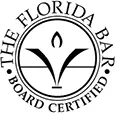When Do You Need a Lawyer to Help Pay for Neck Injuries?
Six of the 70 Clovis Unified District students riding on a bus that recently crashed were transported to the hospital after the crash, with some complaining of neck pain.
Neck injuries are often among the most dangerous and debilitating injuries one can experience. They can result in the need for long-term care and medical assistance. If you’ve suffered a neck injury in an accident that was caused by someone else’s negligence, an experienced spinal cord injury attorney can help you recover the compensation you need to face the future.
What Are the Most Common Causes of Neck Injuries?
Many things can cause neck injuries, including:
- Car accidents: Rear-end collisions are a common cause of whiplash. However, any type of motor vehicle accident may result in neck injuries such as herniated discs, broken bones, or even spinal cord injuries in the neck.
- Motorcycle accidents: The lack of protective features found in other types of motor vehicles and the high likelihood of rider ejection, leading the victim to collide with objects or the ground, make neck injuries a frequent result of this type of accident.
- Slip and fall accidents: Falling is among the leading causes of neck injuries.
- Swimming pool accidents: In some pool-related accidents, the victim hits their head on the pool, causing their neck to break or suffer otherwise severe injury.
- Construction site accidents: Accidents involving a fall or an individual being struck by a falling object frequently lead to neck injuries.
Types of Neck Injuries
The following is a list of the most common accident-related neck injuries.
Whiplash
As explained by Mayo Clinic, the condition known as whiplash involves the soft tissues that surround the spinal column and occurs when the neck makes a forceful back-and-forth motion like a whip. While this type of injury is most commonly caused by rear-end car accidents, it may also be caused by sports injuries, physical abuse, or other types of trauma. The symptoms of whiplash generally appear within 24 hours of the injury and may include:
- Stiffness or pain in the neck that worsens with movement;
- Loss of range of motion in the neck;
- A headache that typically begins at the base of the skull;
- Tenderness, pain, or numbness in the shoulders, upper back, or arms;
- Fatigue or dizziness;
- Blurred vision;
- Ringing in the ears;
- Depression;
- Difficulty concentrating or remembering;
- Irritability; and
- Sleep problems.
While many people get over the symptoms of whiplash within a few weeks, some people have chronic pain that lingers for months or years. Some of the conditions that most often cause long-term complications from whiplash include a prior neck injury or pre-existing neck or back pain, or age. Chronic pain as the result of whiplash is more prevalent in those who experience intense early symptoms such as severe neck pain spreading to the arms, as well as headaches.
Disc Injuries
The spine extends from the base of the skull to the buttocks and contains a series of connected bones known as vertebrae. These vertebrae are connected by a disc and two small facet joints. Spinal discs consist of a tough, fibrous outer layer surrounding a jelly-like interior. Injuries can result in the outer layer of the disc weakening, causing the disc to bulge, or can even result in a rupturing of the disc—known as a herniated disc—that causes the soft inner filling of the disc to ooze out. The herniated disc then creates pressure on the nerves, resulting in pain, numbness, or weakness in the arms and occasionally the legs, as well.
Symptoms of a herniated disc in the neck include:
- Pain or numbness, generally appearing on one side of the body;
- Pain that extends down the arms;
- Pain that worsens at night or with certain movements such as sitting, standing, or walking short distances;
- Unexplained muscle weakness; and
- A tingling or burning sensation in the affected area.
While a herniated disc may show improvement with rest, exercises specifically designed to treat the condition, and time, this condition sometimes requires surgery to repair the affected disc. In severe cases, the disc must be removed and either replaced by an artificial one or repaired by fusing the vertebrae. If not treated, a herniated disc may result in permanent nerve damage.
Cervical Fractures
A cervical fracture—commonly referred to as a broken neck—is a fracture to one or more of the seven cervical vertebrae in the spine. This type of injury is most commonly experienced in car accidents or by diving into shallow water. Cervical fractures are generally caused by a severe and sudden twist of the neck. The main risk of a cervical fracture is that the broken pieces of bone may cause damage to the spinal cord, resulting in paralysis or even death.
A broken neck is a very painful condition that often results in the victim’s inability to move their head. Additional symptoms may include difficulty balancing or walking, and tingling in the hands and feet. Breaks that don’t involve the spinal cord are often treated with the use of a neck brace, pain relieving medications, and rest. For more severe breaks, surgery may be required to set the bones in the correct place and repair the breaks. Cervical fractures that involve the spinal cord allow for very few options as the spinal cord is unable to heal itself on its own and there are currently no approved treatments for repairing spinal cord injuries.
A simple break may heal within six to eight weeks. Breaks that involve surgery may heal in months. Breaks involving the spinal cord can result in permanent injury.
Spinal Cord Injuries
The spinal cord is a long, thin, tubular structure made up of nerves extending from the base of the skull to the buttocks. The spinal cord serves three main functions:
- Relaying messages from the brain to various parts of the body;
- Performing actions involving the limbs; and
- Coordinating reflexes.
As many as 450,000 people in the U.S. are currently living with a spinal cord injury, and about 17,000 new spinal injuries occur across the nation each year. Motor vehicle accidents account for the majority of spinal cord injuries in younger people, while falls are responsible for the majority of spinal cord injuries in people over the age of 65. Other common causes of spinal cord injuries include acts of violence and sports-related injuries. Younger males are most likely to experience a spinal cord injury, with individuals between the ages of 16 and 30 accounting for more than half of the victims of this type of injury, and men making up 80 percent of spinal cord injury patients.
Spinal cord injuries fall into two categories:
- Complete: Complete spinal cord injuries are those in which there is a total loss of function and sensation below the site of the injury and both sides of the body are equally affected. Complete spinal cord injuries taking place in the cervical part of the spine (the neck) result in quadriplegia or tetraplegia, which is the loss of sensation and function to the shoulders, arms, chest, torso, pelvis, and legs.
- Incomplete: Incomplete spinal cord injuries leave some sensation and/or function below where the injury took place. Those with incomplete injuries may be able to move an arm or leg, or may have more function and sensation on one side of the body than the other.
Symptoms of a spinal cord injury following trauma include:
- Extreme pressure or pain in the head, neck, or back;
- Loss of sensation in the hands, fingers, feet, or toes;
- Loss of function in part of the body which may be partial or complete;
- Unusual lumps on the head or spine;
- Impaired breathing; and
- Urinary or bowel urgency, incontinence, or retention.
Non-surgical treatments of spinal cord injuries include observation in the intensive care unit and may also include traction of the spine to move the spinal cord back into alignment. The individual’s blood pressure, ventilation, and cardiovascular function will be monitored. Surgery may be required to stabilize the area and to prevent future pain and deformity. Unfortunately, there is no current non-surgical or surgical means for repairing the spinal cord itself.
Complications
The more severe the neck injury, the higher the risk of complications. Spinal cord injuries pose the highest risk of complications, due to the body’s inability to function properly below the site of the injury. Some complications people with spinal cord injuries may face are:
- Pneumonia.
- Pressure ulcers, also known as bed sores.
- Deep vein thrombosis, which is a blood clot occurring in the veins of the legs. These clots can travel to the heart or lungs and cause a pulmonary embolism, which can be fatal. Deep vein thrombosis occurs in 47-90 percent of individuals suffering a spinal cord injury, and pulmonary embolism occurs in up to half of all spinal cord injury patients.
- Infections of the injury itself or from pressure ulcers resulting from the injury.
- Urinary tract infections caused by urine being retained in the bladder.
- Sexual dysfunction.
- Muscle spasms.
- Chronic pain, which is experienced by as many as 94 percent of spinal cord injury patients. The pain is generally worse in the first year after the injury, and may decrease in intensity or frequency over time.
- Depression.
- Premature death due to complications from spinal cord injuries or the inability to breathe due to loss of spinal cord function. The life expectancy of a spinal cord-injured patient has not improved over the past three decades, in spite of ongoing research aimed at improving quality of life for those dealing with paralysis or tetraplegia following a spinal cord injury.
- Profound impacts on the patient’s personal relationships with their spouse or children.
- Higher rates of divorce and substance abuse than amongst those not suffering from a spinal cord injury.
Lifelong Needs Following a Neck Injury
The majority of functional improvements that can be made following a spinal cord injury occur within the first six months after the injury. Loss of function that is still present after a year is likely to be permanent. This is why early and aggressive treatment, as well as a vigorous approach to physical therapy, offers the best opportunity for meaningful improvement after a spinal cord injury.
Individuals with a cervical spinal cord injury can face several lifelong needs, which may include:
- Adaptive devices such as wheelchairs and assistive features in the home, which may include wheelchair ramps.
- The services of a home health care provider who can assist the individual with daily tasks.
- Repeated hospitalizations to treat secondary infections and other complications that frequently arise for those living with spinal cord injuries.
- Physical therapy to improve and maintain remaining function.
- Psychological therapy to deal with depression often experienced by those who are living with a spinal cord injury.
- Permanent disability or the need to change careers.
- Medications to treat secondary conditions or to relieve pain caused by the injury.
The cost of treating a spinal cord injury is generally between $350,000 and $985,000 in the first year, and as much as $5 million during the patient’s lifetime.
If You or a Loved One Has Suffered a Neck Injury, a Lawyer Might Help
Recovering from a neck injury is stressful enough without worrying about whether you have enough money to pay for the injury-related expenses you will face now and in the future. If your neck injury is due to an accident that was caused by someone else’s negligence, you may be able to recover those expenses through a personal injury claim. A personal injury attorney can help you understand the legal options that are available in your case.
Free Consultation
We Are Here For You 24/7
Reviews
– Elissa M.
“Really pleased with Boohoff Law! Received immediate responses when I had any questions. Treated amazingly by all staff … made this process a true breeze!”
– Caitlyn M.
– Brandy K.
Related Posts
When to Hire a Personal Injury Lawyer
How Much Does Workers’ Comp Pay for a Back Injury?
How to Get the Most Money From a Car Accident
Recovery is personal.
You're better off with Boohoff.











The information on this website is for general information purposes only. Nothing on this site should be taken as legal advice for any individual case or situation. This information is not intended to create, and receipt or viewing does not constitute, an attorney-client relationship.
available 24/7
(877) 999-9999
